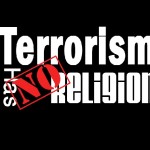Hafsa Azam
Climate change has emerged as the defining challenge of our era, casting a shadow over Earth’s delicate ecosystems and demanding urgent collective action. The Climate Book: The Facts and the Solutions, spearheaded by climate activist Greta Thunberg, is a collaborative non-fiction work that compiles short essays from over a hundred experts. These essays delve into the origins, outcomes, and obstacles of the climate crisis. The book’s cover features a data visualization of warming stripes, a design pioneered by British climatologist Ed Hawkins, symbolizing the gradual increase in global temperatures.
Divided into five parts with 84 short essays, the book covers a wide range of topics. Part I, “How Climate Works,” lays out the fundamentals of climate science. Part II, “How Our Planet Is Changing,” examines the current transformations affecting Earth. Part III, “How It Affects Us,” explores the impact on humanity. Part IV, “What We Have Done About It,” reviews our responses to the crisis. Finally, Part V, “What We Must Do Now,” calls for immediate and decisive action.
The introduction comprises nine short essays, starting with a message from Greta to the older generation expressing her deep concern about the repercussions of climate change. Greta then shares her personal journey into climate activism, narrating her awakening to the crisis’s pressing nature and her decision to forgo school to protest, which led to the creation of the “Fridays for Future” movement in August 2018.
Science journalist Peter Brannen contributes an exploration of the carbon cycle, highlighting how disruptions have historically led to mass extinctions. He warns, “It could even be the case that the planet is more resilient to carbon shocks today than in those very bad old days. There is no reason we need to etch our names on this ignominious roster of the worst events ever in Earth’s history.
But if the rocks tell us anything, it is that we are pulling the most powerful levers of the Earth system. And we pull them at our peril.” Greta’s insights on the far-reaching consequences of climate change on ecosystems, species, oceans, and human communities culminate in a compelling plea for collective action.
In the second part, featuring twenty-four essays, Greta focuses on human activities as the primary driver of climate change, especially the emission of greenhouse gases from fossil fuels. She provides a comprehensive understanding of the greenhouse effect and global warming, detailing their contributions to rising global temperatures, altered precipitation patterns, and sea level rise.
Climatologist Friederike Otto supports Greta’s stance, stating, “Today, those of us who are not completely delusional have realized that climate change is not something happening somewhere else, at some point in the future, but a phenomenon that is killing people here and now.” Greta concludes with an invitation to recognize the gravity of the crisis and take decisive action.
The third part offers twenty essays with tangible solutions for tackling the climate crisis, outlining steps individuals can take to reduce their environmental footprint. Greta examines high-emission sectors like energy, agriculture, and transportation, advocating for transformative measures.
The book also argues for climate justice, emphasizing the principle that polluters must bear responsibility. Saleemul Huq, Director of the International Centre for Climate Change, asserts, “Loss and damages serve as a diplomatically negotiated substitute for a topic deemed unspeakable: liability and compensation.” Greta emphasizes that action is not solely the responsibility of governments and corporations but extends to every individual.
Practical guidance is provided for reducing greenhouse gas emissions, including dietary changes, minimizing private transportation, embracing renewable energy, and reducing waste. Greta asserts that while the climate crisis is formidable, it can be addressed through collaborative efforts, highlighting the necessity of collective action.
The fourth section comprises twenty-seven essays, with experts analyzing the crisis from various angles, including the need for climate justice and the impact of fossil fuels versus renewable energy solutions. Topics span land use, food systems, industrial emissions, transportation, and consumerism’s environmental toll. Kevin Anderson warns, “Our remaining carbon budget range is small and rapidly shrinking. For a ‘likely’ chance of not exceeding 1.5°C, we have under eight years at the current rate of emissions.” The section also addresses equity, degrowth, and perceptual gaps hindering effective action.
The final part contains twenty-two essays confronting the real challenges ahead. Greta emphasizes the urgency of self-education. Climate journalist David Wallace-Wells draws lessons from the pandemic, urging not to repeat mistakes in facing the climate crisis.
He notes, “When it came to public spending, every nation in the world was suddenly operating in an entirely new reality, without any of the political and social constraints which had previously set the speed limit on climate action.” Kate Raworth provides guidance on adopting 1.5°C lifestyles, emphasizing that change is often most challenging just before implementation. An inspiring essay by George Monbiot and Rebecca Wrigley advocates for “rewilding,” restoring ecosystems without interference.
Greta Thunberg’s The Climate Book is an encyclopedic contribution to climate literature, emphasizing the need for urgent action. It offers comprehensive coverage, rich with facts and action-oriented recommendations, underscoring the importance of collective effort in addressing the pressing issues of climate change.
The author is a Research Assistant at the Center for International Strategic Studies Sindh (CISSS).







